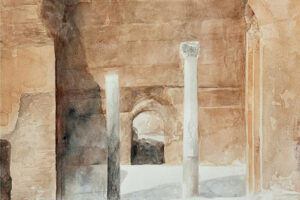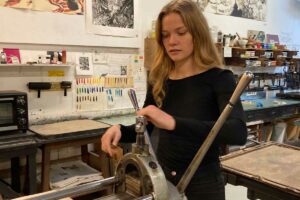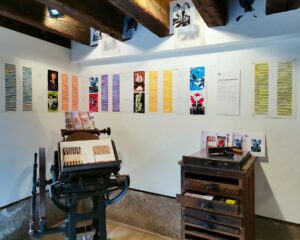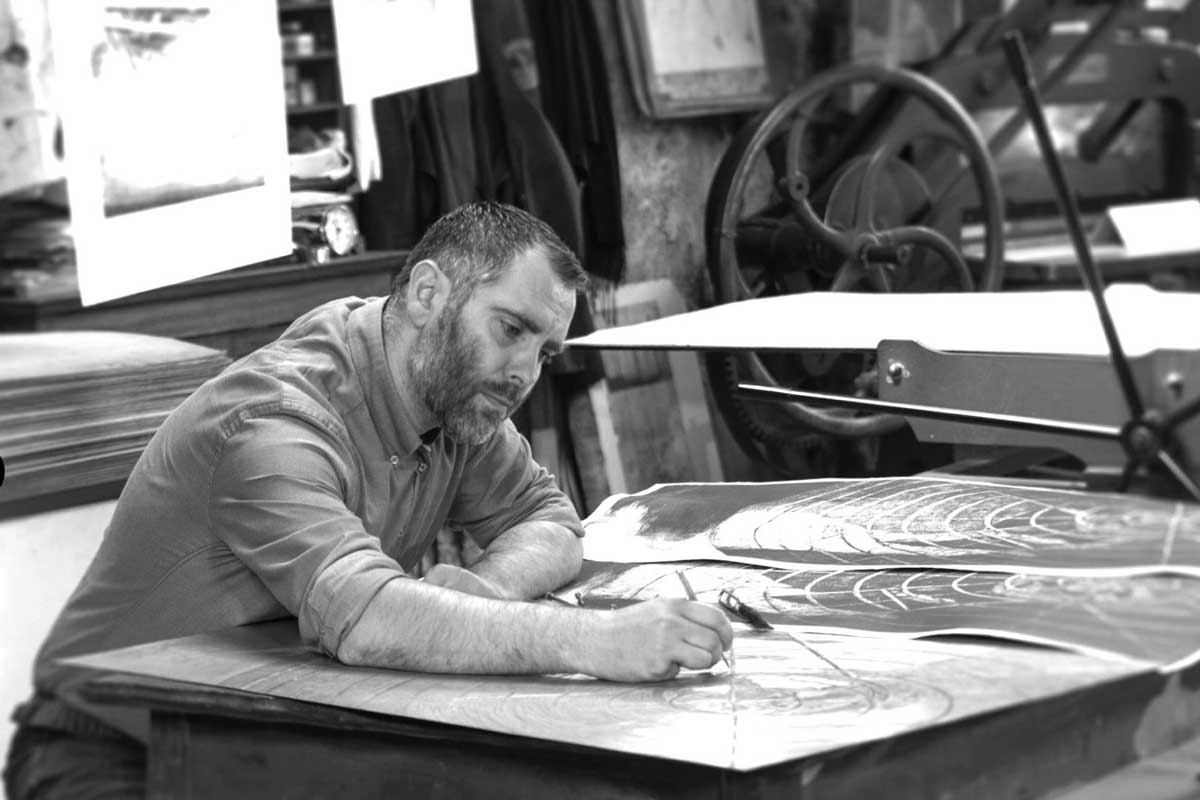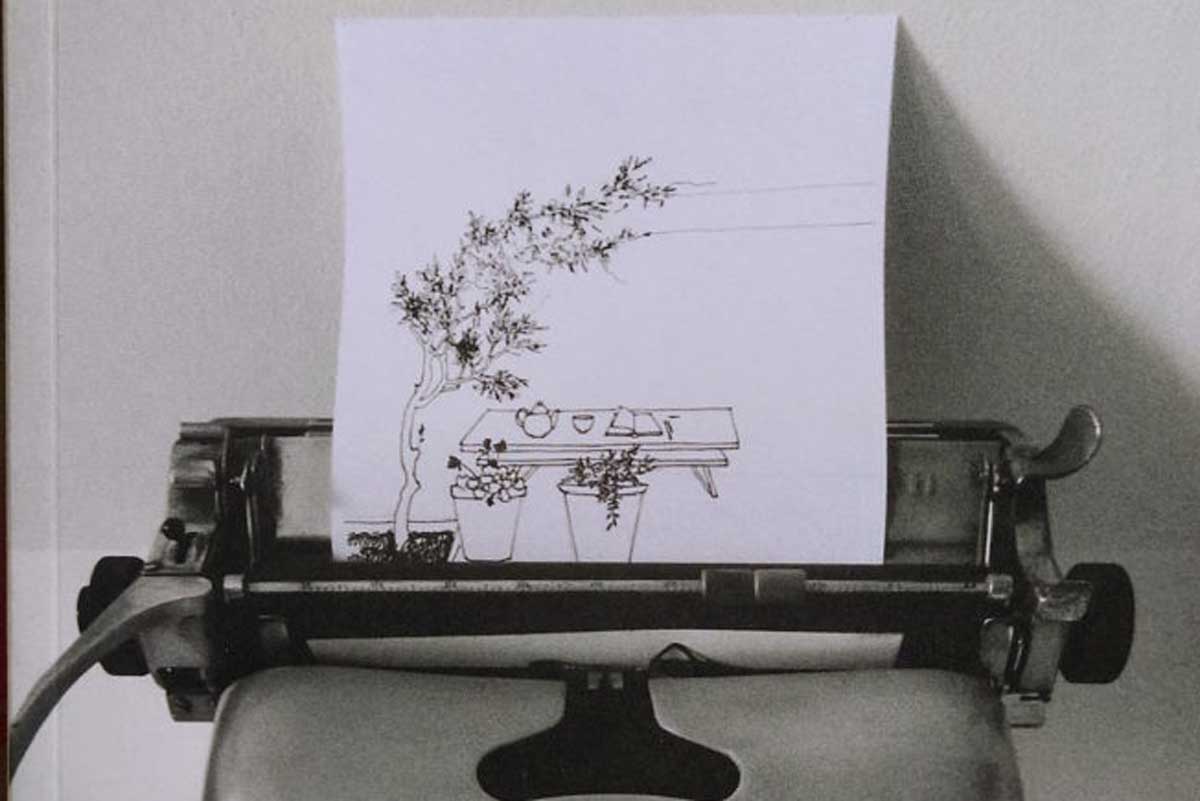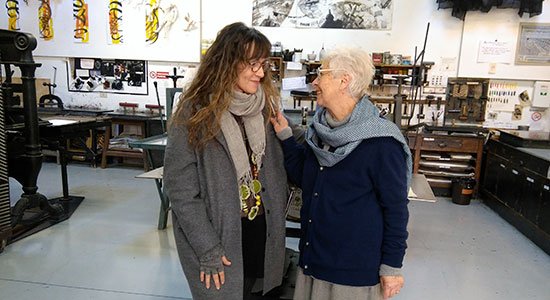June 5, 2016
Jeffrey Dell: from San Marco to San Marcos
Lorenzo de Castro: Jeff, you first came to Venice as a young artist for a one-year fellowship at the Scuola. Eventually you stayed for another year. During these 2 years you taught printmaking to Italian and American art students. How did this experience form you as an educator?
Jeff Dell: The impact was big. As someone who’d just finished grad school, I was facing multiple large challenges: teaching in another country (and another language), teaching both inside and outside of a university’s set of expectations and requirements, and acclimating to a world outside of the hothouse of grad school.
I recall playing games with the Italian students: we’d make a list of five Italian words each class day and then see how many times we could use them that day. This way I was learning the language while they learned to make prints. With the US students, I was their ambassador, as it were. I enjoyed that role, and it got me to study a lot of history and context of what and where we visited. It got me to be more fearless in asking questions than I would have been on my own. I learned to not only be myself, but also to be nimble in planning the curriculum. I also learned that asking good questions is more important than knowing everything before hand.
LdC: I am curious to know what your experience of American culture and society was like after 2 years spent in Venice. Did you see things in a different way?
JD: Experiencing another culture and language deeply is a transformative experience, even if it’s not always easy. It really is one of the most rewarding experiences of my life, and I think everyone should do it. Frankly, I arrived in Venice with a broad dislike/distrust of US culture, and I was automatically more reverent of Italian history and art. This tempered over my time there. I began to see the relative strengths and weaknesses of all cultures.
I had previously lived in China and so was a bit ready for the culture shock of returning to US culture. After living in Venice, it’s often like seeing two of everything. I don’t just see the American thing, but I simultaneously see the Italian version of it as well. For years I had to curb my impulse to talk about it constantly, for fear that friends would find me a bore. Occasionally, an Italian word will come to me before the English. I found myself just the other day describing a well-polished copper plate as “liscio, liscio…” even though here I am in the middle of Texas.
LdC: When you are in Europe and Italy you are just looking at classical art and tradition, or are there more elements that attract and interest you and your students?
JD: the experiences were always broader than classical and Renaissance. The Biennale is foremost, but also Palazzo Grassi and now the Punta della Dogana, which when I was there was more or less a quiet fishing spot for old men (and yes, they actually ate those seppie). Venice is really a major point in the still fairly small circuit of high-end contemporary art. What Venice, and Italy, does not always do well is the broad, messier middle market of contemporary art, basically all those current artists that aren’t blue chip.
A revelation for me in Venice was the high number of lesser-known treasures. Places like the Scuola Dalmatia and Carpaccio’s great paintings there, the church of San Zaccaria and the Bellini Sacra Conversazione, as well as the many works in the Accademia and elsewhere. Living in Venice was the first time in my life that I could regularly visit these spaces and objects that exert a huge influence. I learned from them every time I saw them.
LdC: You are always exploring new languages in your art, I have seen this constant quest since I first knew you and I always liked it. This question is similar to the previous one: how did your Venetian experience influence and change your work: was it just aesthetics, or was there more?
JD: It’s interesting. My work has changed a lot over the years (it’s even something I’m asked to speak about occasionally). When I was in Venice, making images of the city in any direct way seemed impossible, overwhelming, although it certainly crept in in many indirect ways. As Mary McCarthy pointed out, there’s no part of Venice that hasn’t been imaged before. But when I arrived in Texas after two years in Venice, I found that I could make direct images of Venice. It’s a city that is fraught with cliché, but it’s also one of the most beautiful, storied, amazing, and complicated cities on the planet. It is old and yet exclusively urban. It is beautiful yet somehow threatening as well. It is touristy yet, looking past that, there is no corner that does not fit into endless histories. I think these contradictions continue to have an influence on my world view and the work I make.
I have a lifetime project of walking every calle, rio terà, campo➤ and walkable space in Venice. I think I’m about half done. I need to get back there. Then, I suppose, I need to start boating every canal.
Jeffrey Dell is a printmaker and Professor at Texas State University➤ San Marcos, TX. He earned his BA from Hamline University➤ St. Paul, MN and his MFA from the University of New Mexico➤ Albuquerque, NM. He is represented by Art Palace Gallery➤ Houston, TX and has exhibited widely, including at Galleri Urbane➤ Dallas, TX; Leipzig International Art Programme➤ Leipzig, Germany; and the International Print Center➤ New York, New York, NY; the Print Center➤ Philadelphia, PA, USA. He was twice a fellow at the Scuola Internazionale di Grafica.

